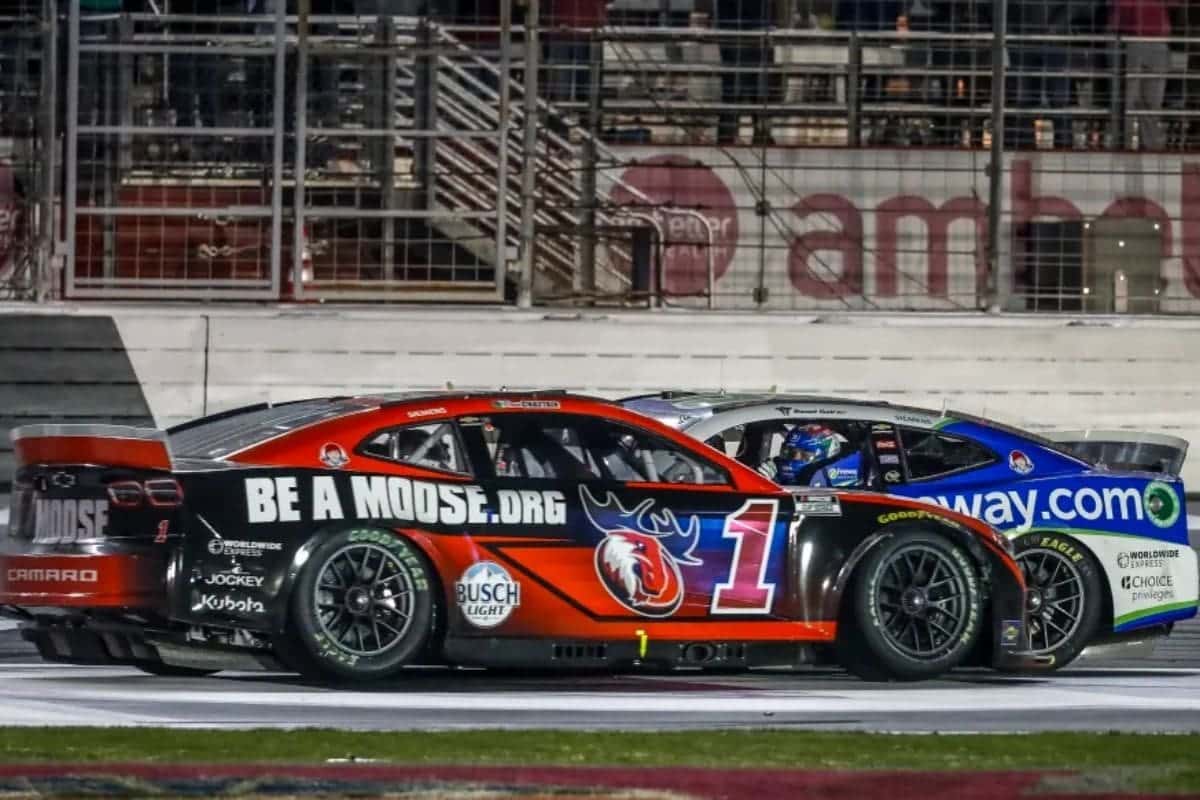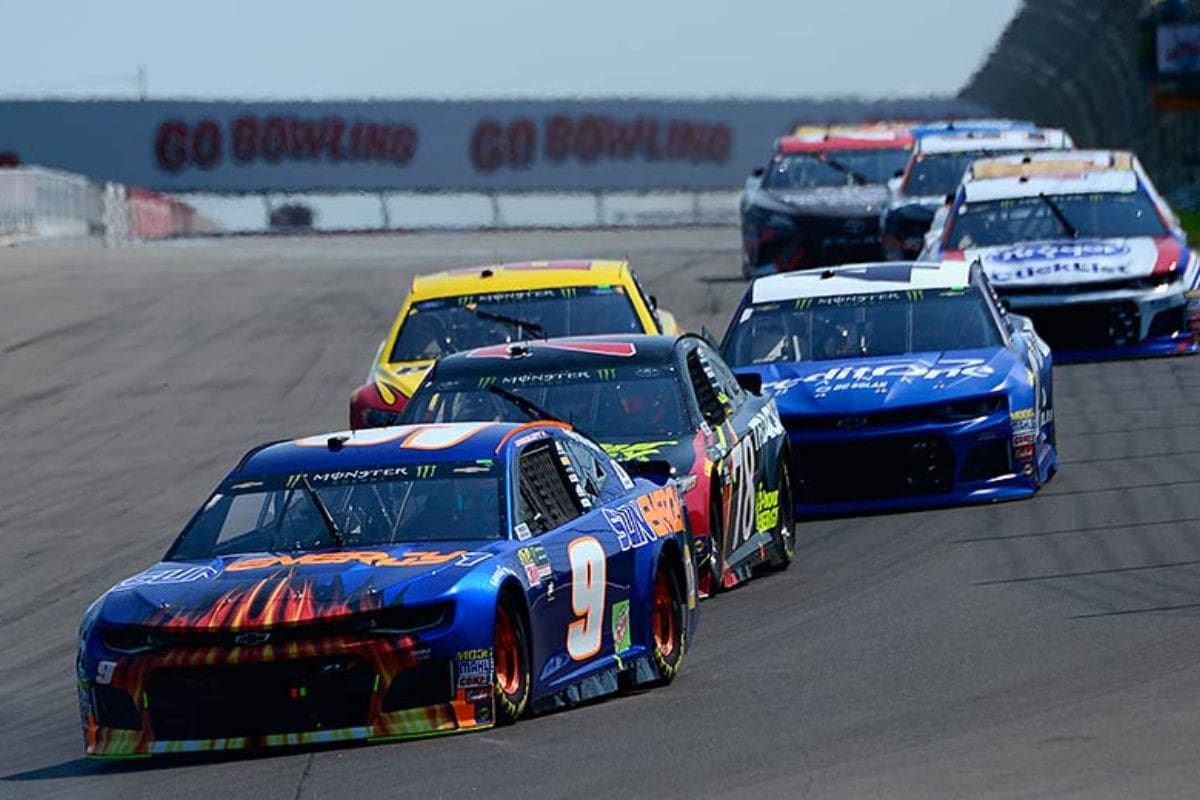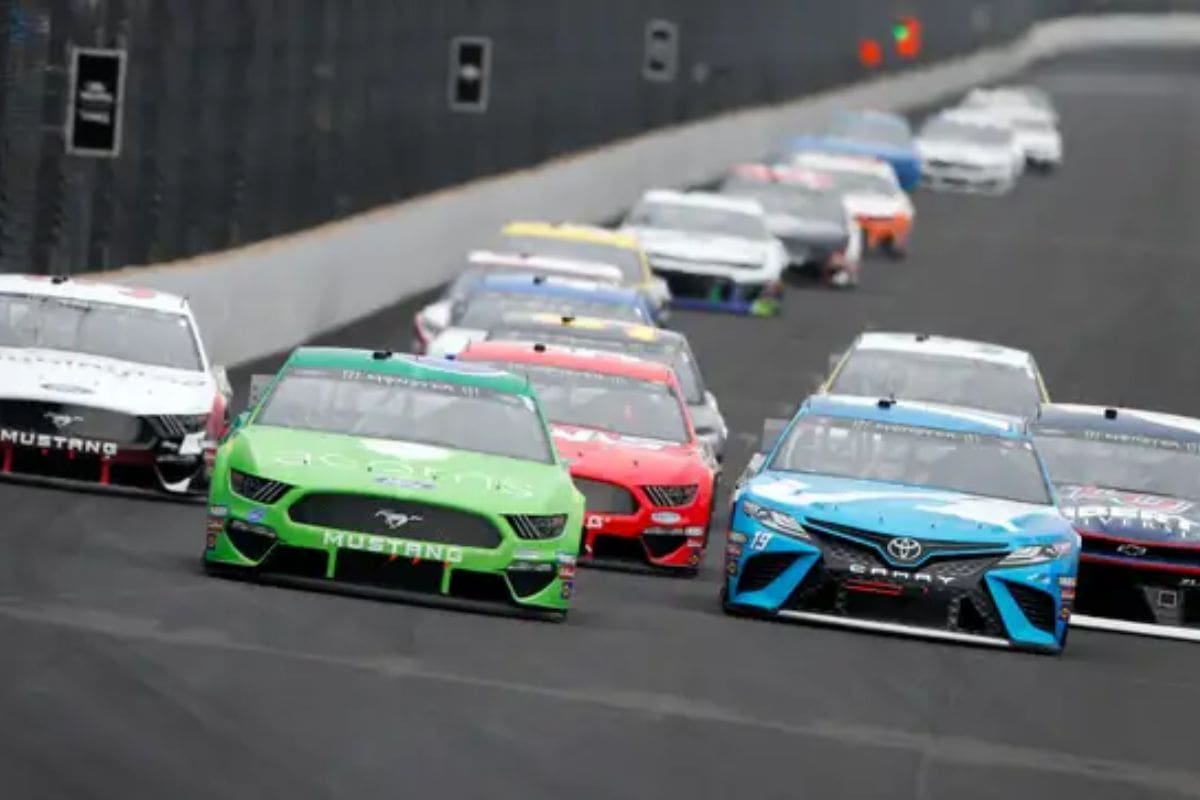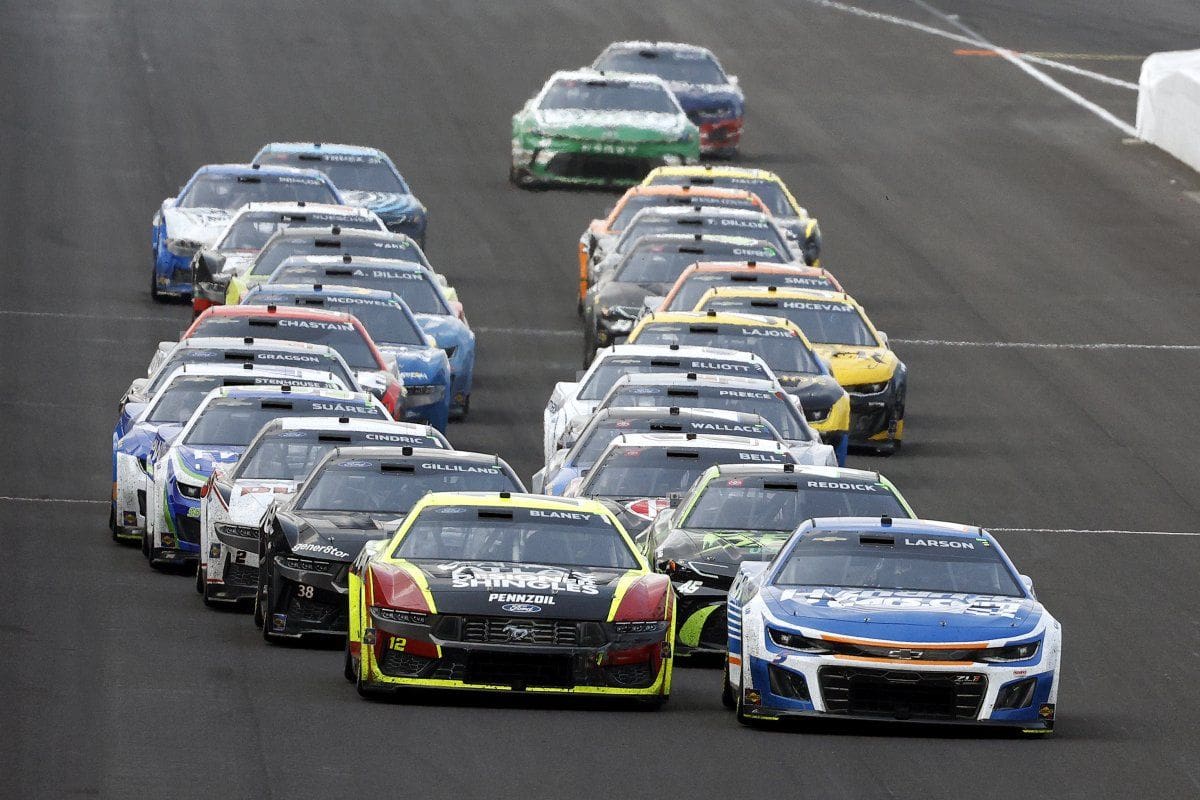Trackhouse Racing’s Future at Risk: The recent departure of Ty Norris from Trackhouse Racing has cast a shadow over the team’s future, raising essential questions about its stability and direction. Norris, a foundational figure in the organization, played a significant role in its rapid rise within the NASCAR Cup Series, and his absence may disrupt established strategies and protocols. Coupled with inconsistent driver performances and recent personnel changes, the team now finds itself at a critical crossroads. As Trackhouse seeks to redefine its path forward, the implications of this sudden shift warrant a closer examination of both leadership dynamics and competitive viability.
Key Highlights
- Ty Norris’s departure disrupts Trackhouse Racing’s established protocols, raising concerns about team stability and strategic direction.
- Inconsistent driver performance this season highlights the urgent need for improvements and effective leadership to foster growth.
- The introduction of new drivers creates uncertainty regarding team cohesion and the ability to maintain competitive results.
- Historical evidence suggests leadership changes in NASCAR can significantly impact team dynamics and performance outcomes.
- Trackhouse must focus on accountability and maintaining momentum to navigate the challenges posed by Norris’s exit and recent performance issues.
Trackhouse Racing’s Current Challenges
Trackhouse Racing faces considerable challenges as it navigates a tumultuous season in the NASCAR Cup Series. As a relatively new team, the organization has established itself through tactical decisions and key performances; however, recent developments indicate a precarious situation.
The performance of its drivers, Daniel Suarez and Ross Chastain, has been inconsistent, with Suarez’s lone victory in Atlanta contrasting sharply with the comprehensive lack of competitive results. Chastain’s failure to qualify for the playoffs further highlights the urgency for improvement.
The team’s decision to shuffle its approach in response to these challenges suggests an acknowledgment of the need for considerable change. Yet, the impending introduction of new drivers raises questions about the stability and cohesion within the organization. New talent often brings uncertainty, particularly when existing team dynamics are already under strain.
Moreover, the unexpected departure of a top executive during this critical moment casts a shadow over Trackhouse’s future. The individual’s extensive experience and contributions were instrumental in the team’s development, and their exit may disrupt established protocols and tactical direction.
The loss of such a crucial figure at a time when the team needs robust leadership could hinder recovery efforts.
Trackhouse Racing’s Past Success
Amid the current struggles, it is essential to reflect on the remarkable achievements that have defined Trackhouse Racing‘s path since its inception. Established in 2021 by Justin Marks, the team swiftly emerged as a formidable contender in the NASCAR Cup Series.
The 2022 season marked a significant milestone for Trackhouse, particularly with the introduction of the Next Gen car. While many teams grappled with this new technology, Trackhouse Racing showcased an exceptional ability to adapt and innovate.
Daniel Suarez made history by becoming the initial Mexican driver to secure a NASCAR victory at Sonoma Raceway, an achievement that not only highlighted the team’s potential but also emphasized its role in diversifying the sport. Furthermore, Ross Chastain displayed his talent by clinching two victories and finishing as the runner-up in the championship standings. These accomplishments not only raised the team’s profile but also fostered a sense of unity and resolve within the organization.
A key architect behind this success was Ty Norris, who served as President and Chief Business Officer. His leadership and tactical vision were integral to cultivating a competitive environment and attracting talent.
However, while the past achievements of Trackhouse Racing are commendable, they also set a high benchmark for future performance. The team’s ability to build on this foundation will be essential in maneuvering the challenges ahead and ensuring sustained success in a constantly changing landscape.
As Trackhouse Racing confronts uncertainty, its legacy of innovation and resolve remains a critical asset to utilize in pursuit of future victories.
Ty Norris’s Departure and Its Implications
The sudden departure of Ty Norris, a vital figure in Trackhouse Racing‘s establishment and growth, raises considerable concerns about the team’s stability and future direction. Norris’s extensive experience, including his tenure with Dale Earnhardt, Inc. and Michael Waltrip Racing, positioned him as a linchpin in Trackhouse’s ascent within NASCAR. His exit, particularly after reportedly moderating a meaningful press conference just weeks prior, has sent shockwaves through the organization and its stakeholders.
The timing of Norris’s departure is particularly troubling. Trackhouse Racing finds itself at a critical crossroads, with its drivers, Daniel Suarez and Ross Chastain, both having missed the playoffs in the previous season. The recent release of Zane Smith, despite a multi-year commitment, coupled with the introduction of Connor Zilisch, signifies a period of upheaval. The loss of a foundational leader like Norris during such a significant phase could hinder the team’s ability to navigate these changes effectively.
“Just three or four weeks ago, Ty Norris was moderating the SVG to Cup press conference, This was a guy who worked with Dale Earnhardt, back in the DEI days. From there, he went to Michael Waltrip Racing, helped that team evolve into a borderline championship-contending team.”-(estepp)
Industry experts, including NASCAR commentator Eric Estepp, have emphasized the gravity of this situation, suggesting that Norris’s absence could impede Trackhouse’s tactical initiatives and operational cohesion.
As the organization struggles with the ramifications of this decision, the implications extend beyond mere leadership; they touch the very essence of the team’s competitive integrity and future prospects. Without Norris’s guiding influence, Trackhouse Racing risks faltering at a time when clarity and direction are paramount for continued growth and success in the fiercely competitive landscape of NASCAR.
Ty Norris’s Impact on Driver Performance
With Ty Norris at the helm, driver performance at Trackhouse Racing reached new heights, illustrating the profound impact of effective leadership on competitive success. Norris’s guidance played a crucial role in revitalizing Daniel Suarez’s career, enabling him to achieve remarkable milestones. After shifting from Joe Gibbs Racing and Stewart-Haas Racing, Suarez flourished under Trackhouse, ending in a celebrated win at Sonoma in 2022, alongside 13 top-ten finishes and a commendable 10th-place overall standing for the season.
“The timing is questionable as well. Right now, Trackhouse is at a crossroads…Last year, Suarez missed the playoffs and this year Ross missed the playoffs. They just let Zane Smith go after they signed a multi-year contract…now they have added Connor Zilisch into the fold—a lot is changing. It seems less than optimal timing for one of your founding fathers to step away. This is a big loss for team Trackhouse.” -(estepp)
However, the 2023 season presented a clear contrast, as Suarez’s performance notably declined. The table below outlines these contrasting results, highlighting the volatility in driver performance that can arise from leadership dynamics.
| Year | Key Achievements | Challenges Faced |
|---|---|---|
| 2022 | Sonoma win, 13 top-tens | None reported |
| 2023 | 6 top-fives | 6 DNFs, only 50 laps led |
Norris’s frank critiques following the disappointing 2023 season emphasize the necessity of accountability. By holding drivers to high standards, he built an environment that encouraged growth and resilience. While Suarez’s struggles were pronounced, Norris’s feedback may ultimately serve as a catalyst for future improvement. His departure raises questions about the sustainability of this performance-oriented culture, leaving Trackhouse Racing at a crossroads as they prepare for the next chapter in their competitive path.
Norris’s Criticisms and Suarez’s Recovery
Although Ty Norris’s criticisms of Daniel Suarez and the No. 99 Chevrolet team were sharp and pointed, they served as a essential turning point for both the driver and the organization. Norris stated a vital reflection on the team’s execution, emphasizing how critical moments—adjustments, pit stops, and restart decisions—could have markedly altered their competitive standing in the 2023 season. His assertion that the human element required urgent attention highlighted a fundamental truth: success in motorsports hinges on flawless coordination and execution.
“The execution this past year was way off. And that execution could have happened in adjustments. It could have happened on a pit stop. It could have happened on a choice on a restart. A lot of things. The execution this year on the 99 was unacceptable, quite honestly…If you see that the things that rust are capable of winning races, then it has to come down to the execution and the human element, and we have to make sure we’re addressing each one of those areas to improve, and we’re doing so as a team, collaborating on all of those decisions.”-(norris)
These frank remarks acted as a catalyst for change, propelling Suarez to reassess his strategies and approach heading into 2024. The driver responded to Norris’s critique with remarkable resilience, channeling the constructive feedback into tangible performance improvements. Indeed, Suarez’s subsequent victory at Atlanta in February marked a resurgence, illustrating the effectiveness of addressing weaknesses head-on.
Currently positioned fifth in playoff points, Suarez’s path indicates not only personal growth but also the potential revitalization of Trackhouse Racing.
The interplay between Norris’s incisive feedback and Suarez’s subsequent recovery highlights a key dynamic in competitive sports: adversity can drive excellence. However, with Norris’s departure now looming over the team, the question arises: can Trackhouse harness this momentum while steering through the uncertainties of leadership changes?
As they forge ahead, the lessons from 2023 may prove invaluable, emphasizing the interconnectedness of critique, accountability, and performance in the high-stakes world of NASCAR.
News in Brief: Trackhouse Racing’s Future at Risk
The departure of Ty Norris from Trackhouse Racing signifies a critical turning point for the organization. His contributions were instrumental in shaping the team’s competitive edge, and his absence may destabilize established protocols and tactical direction.
In view of inconsistent driver performances and recent personnel changes, the need for robust leadership and collaborative effort becomes paramount. The future of Trackhouse Racing hinges on its ability to adapt and maintain cohesion amidst these emerging challenges.
ALSO READ: Trackhouse Racing Revives Dale Jr.’s Legacy: Dale Jr. Praises Shane van Gisbergen





